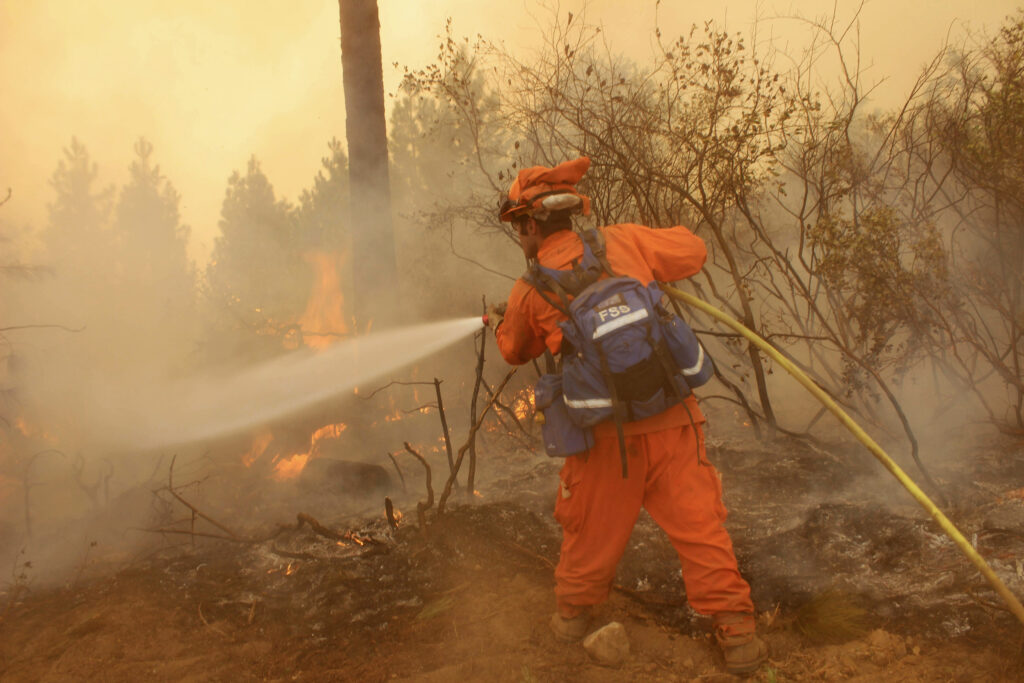
The California Department of Corrections and Rehabilitation took a progressive step to make fire camp more accessible to participants in the Youth Offender Program, known to residents as YOP.
Captain Fred Money came to San Quentin Rehabilitation Center from Sacramento with Lt. M. Hill and Lt. Vanessa Melendez to speak to incarcerated residents taking part in the program. YOP mentors and mentees went to Chapel B to learn about recent changes. Lt. Hill, the Commander at Growlersburg Conservation Camp, a 27-year CDCR veteran, talked about not making excuses. He believed everyone has value and worth.
“We expect more from you in camp. You been through some stuff in life but many of you just haven’t been challenged the right way. Camp feeds you rib eye steaks, offers GED programs to get you 6 months off your sentence, face-to-face Lake Tahoe College classes free of charge, weightlifting for strength training. If you really don’t know who you are, camp will give you that opportunity,” Hill said.
One critical change gave mentors — ages 26 and older — permission to request to go to fire camp and gave mentees — ages 18 to 25 — a chance to go to a youth fire camp.
The other big change concerned fire camp participation for youth offenders with an administrative “VIO” classification related to a current or prior conviction for a violent felony as defined in the California Code of Regulations Title 15 3375.2(b)(29).
Eligible participants must have a security level of III (or under) and must have at least 6 months left on their sentences with under 8 years left to serve. A YOP participant must have an Institutional Classification Committee approval to go to camp. A correctional counselor’s request would not suffice.
“There are incentives for going to camp. You can become a firefighter once you’re released,” Capt. Money said, indicating yet another change.
In the past, returned citizens struggled to get firefighter jobs because their convictions prevented them to obtain an EMT license, a condition for such positions. Assembly Bill 2147, signed by Gov. Gavin Newsom in 2021, has since allowed returned citizens to expunge their records by working at fire camp, which would allow them to obtain an EMT license.
“We just doubled the pay of our top firefighter from $5.12 to $10.24 a day,” Capt. Money said. If fighting an active fire, Cal Fire would pay incarcerated firefighters an additional dollar an hour. “The CDCR has already approved Cal Fire to pay around $200 a week,” Capt. Money said, adding, “They feed you better in camp. We want the youthful offender to make this their last stop in prison getting out and having a good job. Every year we have guys walking out of prison into a state job.”
Former lifer Jose Olmedo spoke about his life in prison and the help his job as a life coach at the Ventura Training Center fire camp has provided. After six denials, the Board of Parole granted his release in 2015. Since paroling, Olmedo has traveled across California to recruit firefighters.
“We offer attorney help for child custody cases, people to help you build your credit and money saving plans,” said Olmedo, also an employee at the Anti-Recidivism Coalition. “When you leave this 18-month program, the plan is to have you leave with $20,000 to $30,000 in the bank to put down on your first house.”
Lt. Melendez, employed at the Pine Grove Youth Conservation Camp, took the stage and said, “Can you imagine coming to camp then sending your kids pictures of you in a firefighter uniform? People in our community love our firefighters. Amity Foundation just took our firefighters bowling.”
Mentor Charles Williams, 38, a resident at San Quentin, left the event feeling positive. “It’s one thing to hear about it, but for them to come to San Quentin to inform us about what’s going on was great,” Williams said. “It shows the system is changing; I have 47 years to serve so I can’t go but I’m sure I would go if I could.”
Capt. Money and Lieutenants Hill and Melendez kept emphasizing the importance of staying drug-and-alcohol-free. Lt. Hill referred to it as the number one dream killer in camp.
The participants in the event applauded as they learned about this new opportunity. San Quentin resident James Hilton, 25, said he had a few months left before aging out of the Youth Offender Program.
He later reported that after having left the event, he went to his counselor to request placement on the fire camp list. He said he had thought applying to fire camp would have turned into a long process, but the Institutional Classification Committee heard his application in only 2 weeks. Two months later, Hilton said he would go to the fire camp in Jamestown, called the Sierra Conservation Center.
“I went from hopeless to having hope. Going to this event changed me,” Hilton said.